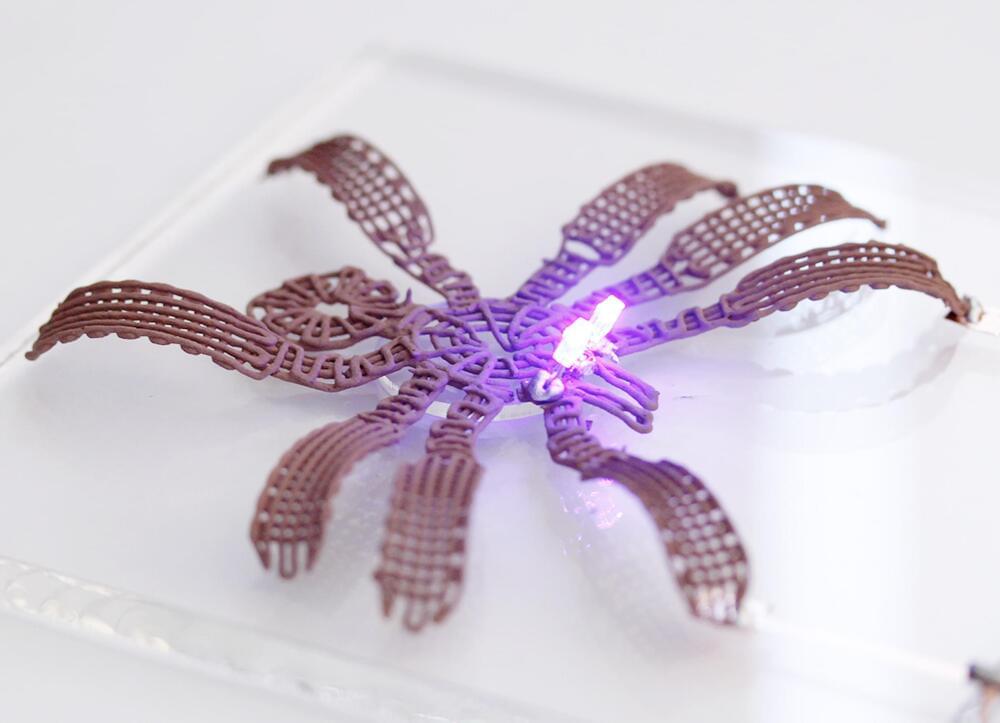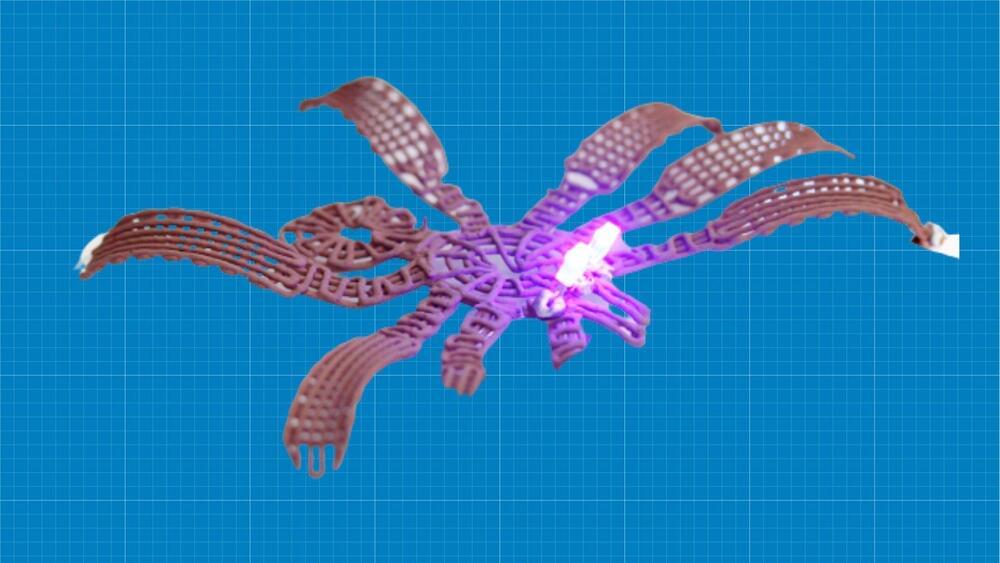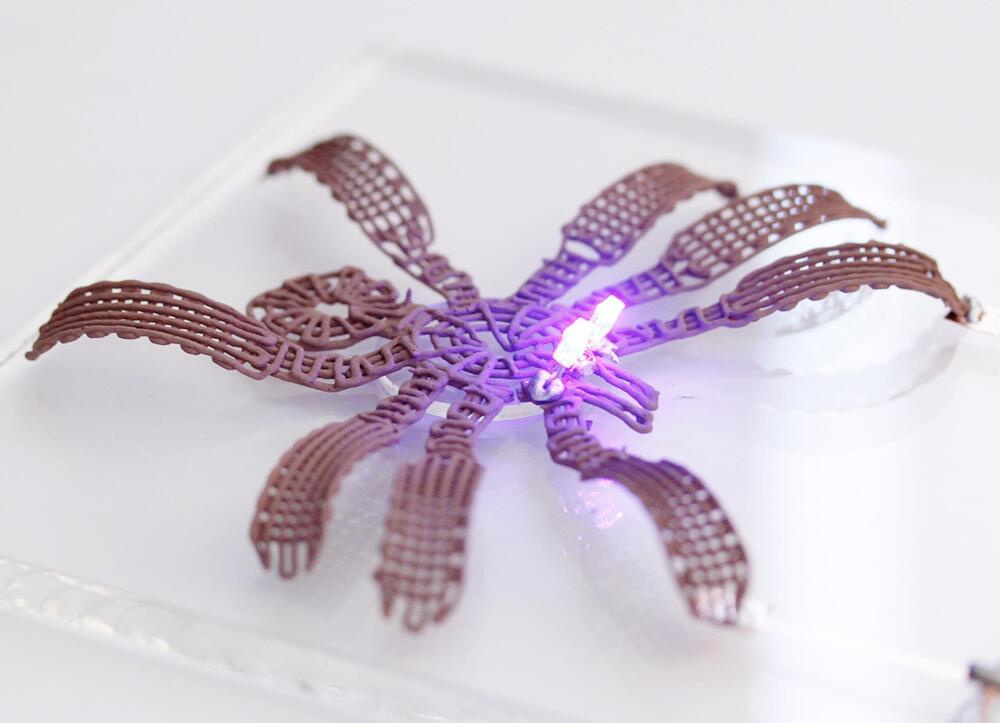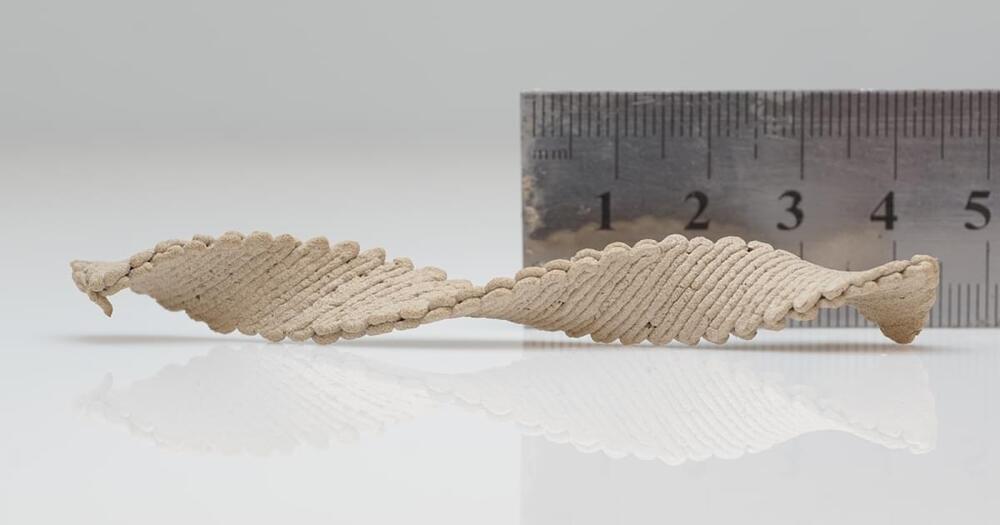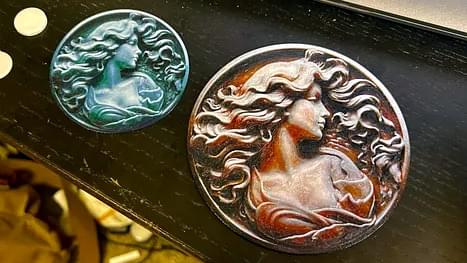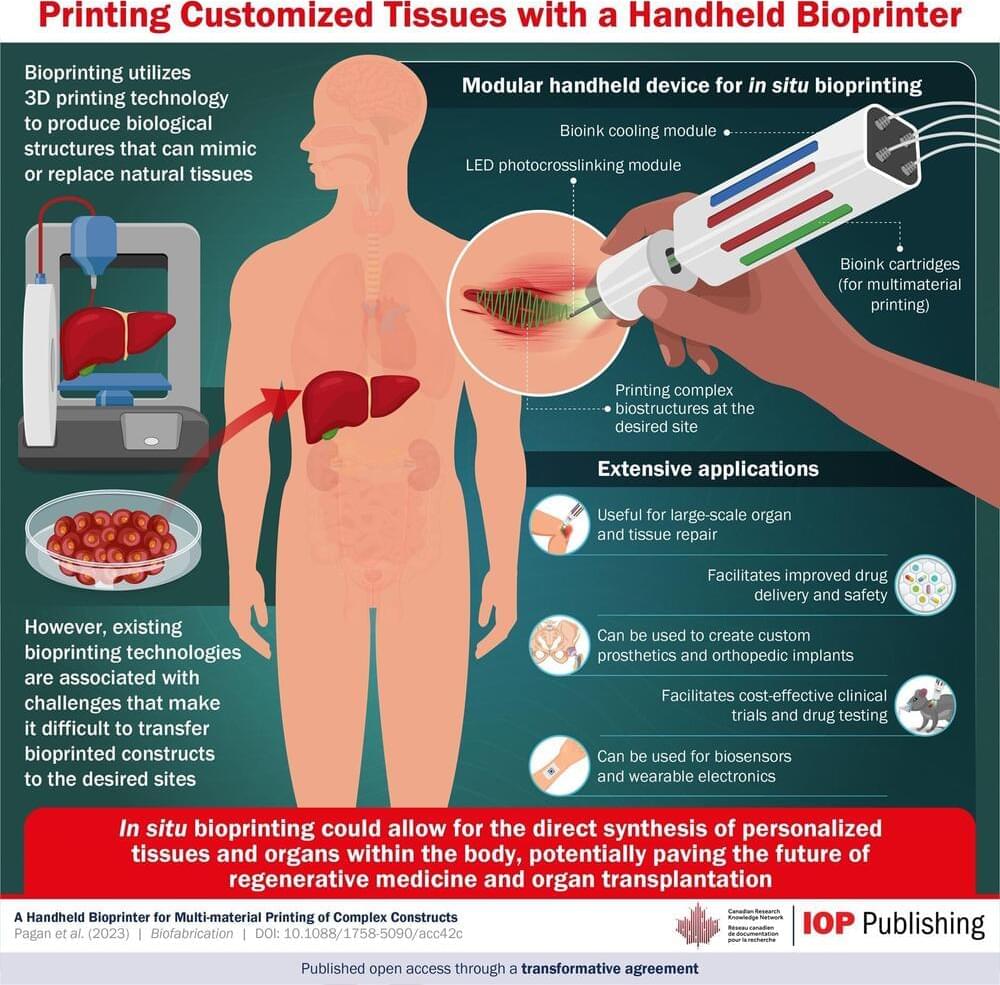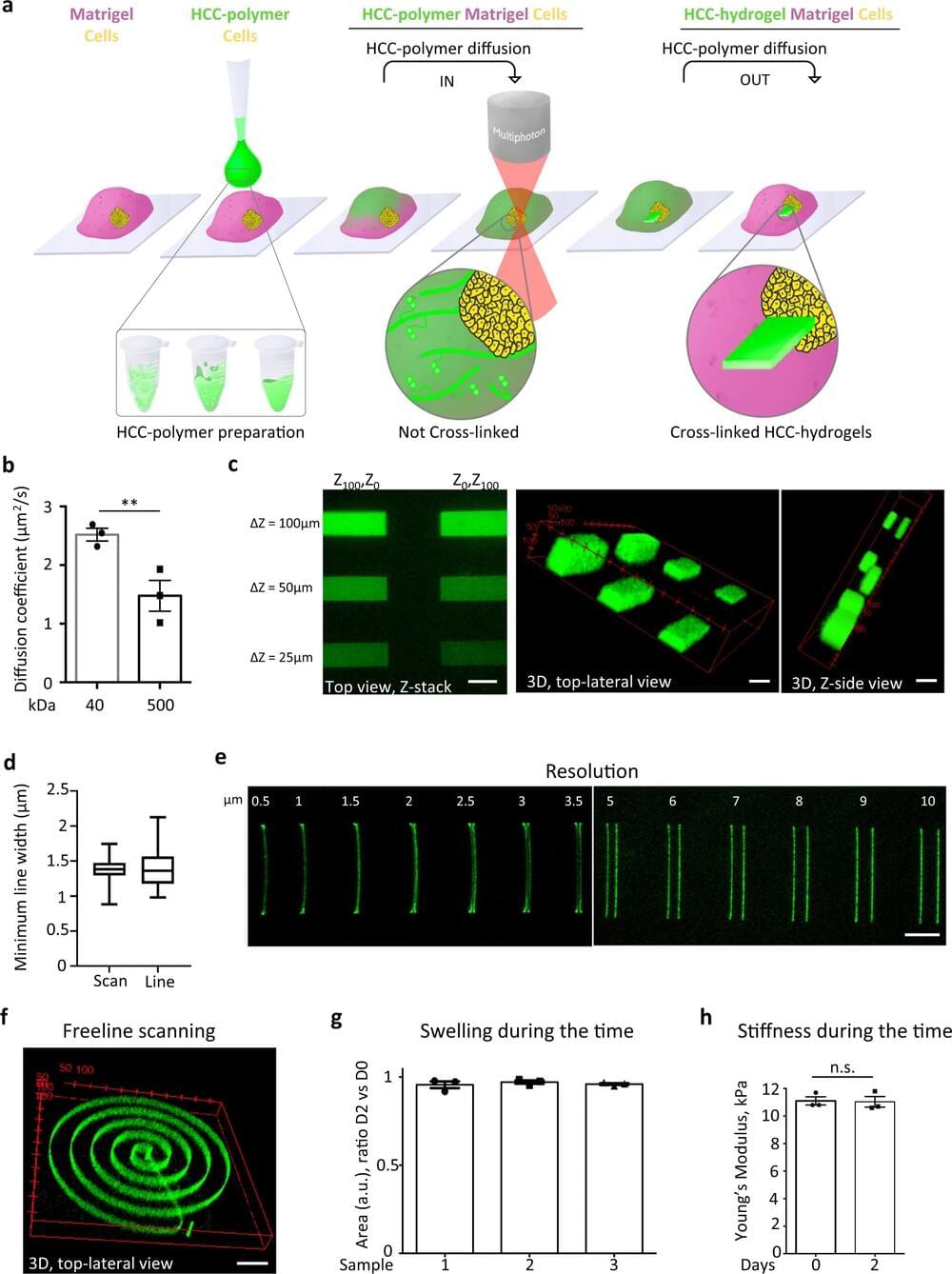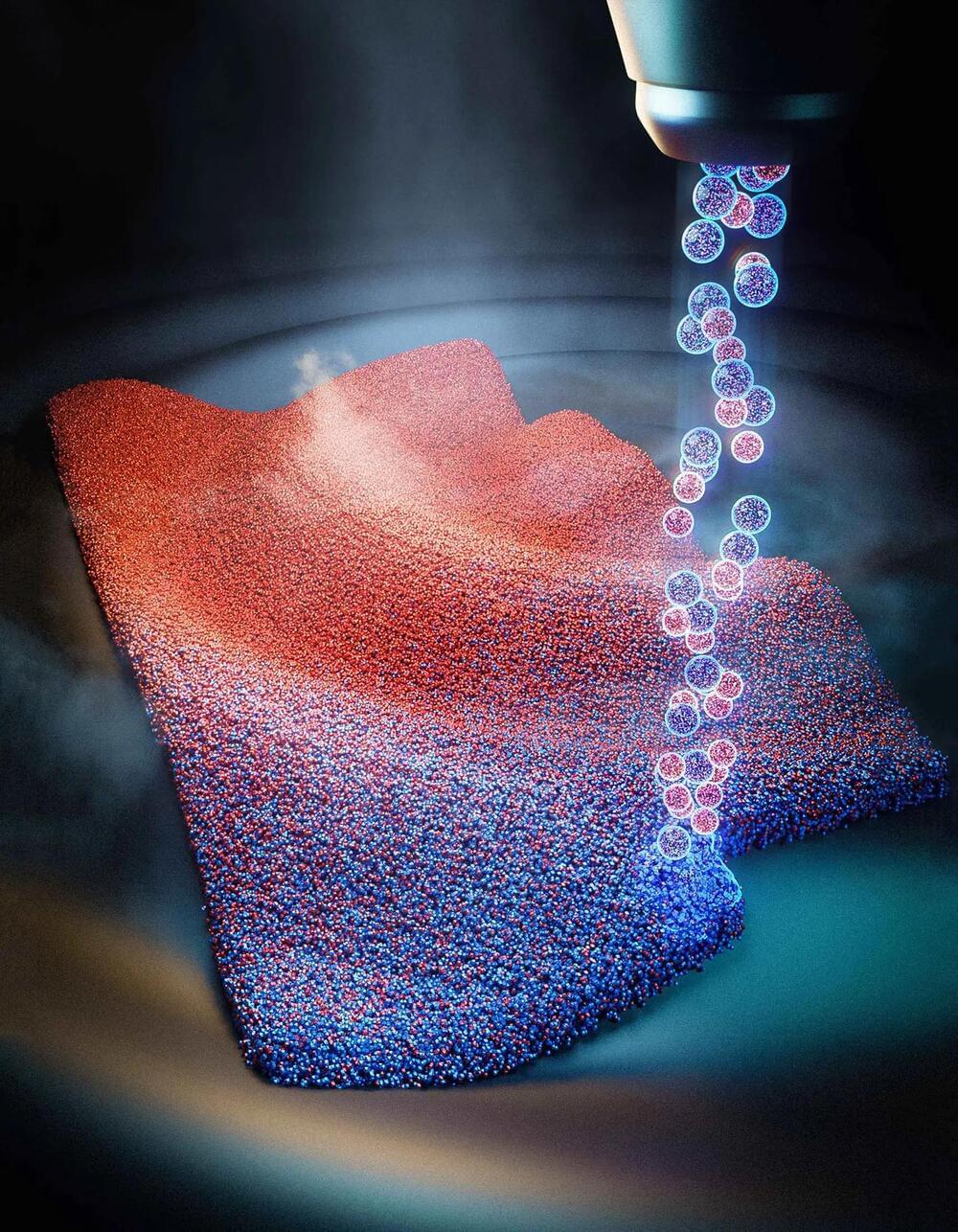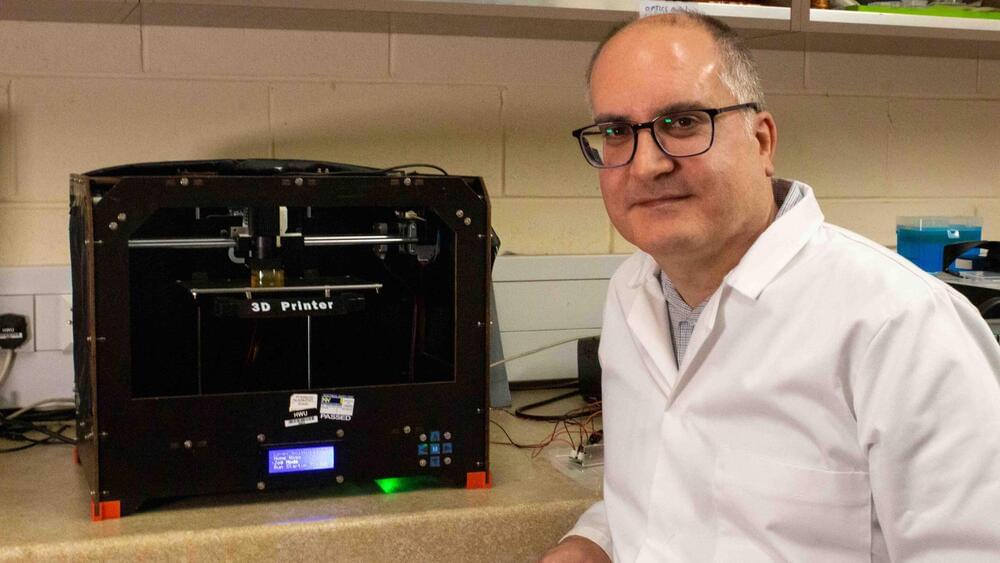Jul 7, 2023
Revolutionary gel allows metal items to be 3D printed at room temperature
Posted by Kelvin Dafiaghor in categories: 3D printing, materials
Although there are several methods of 3D-printing metal objects, all of them involve the application of heat – which isn’t conducive to producing certain heat-sensitive electronics, among other things. A new gel, however, can be used to print such items at room temperature.
Created by a team of scientists at North Carolina State University, the material starts out as a solution consisting of copper microparticles suspended in water. Microparticles of another metal, known as eutectic gallium indium alloy (EGaIn) are then added, as is hydrochloric acid.
Continue reading “Revolutionary gel allows metal items to be 3D printed at room temperature” »
